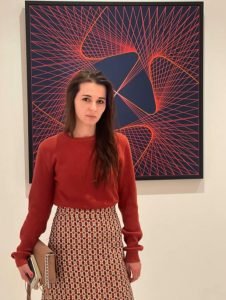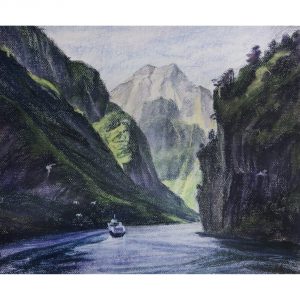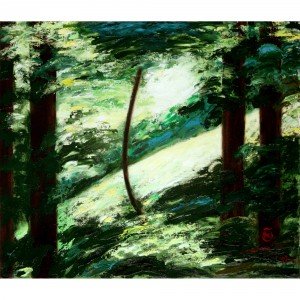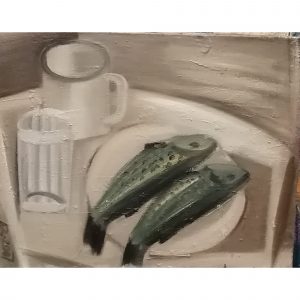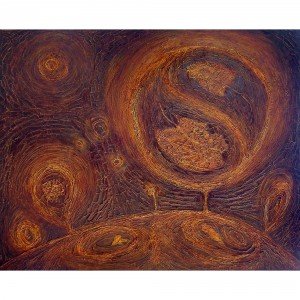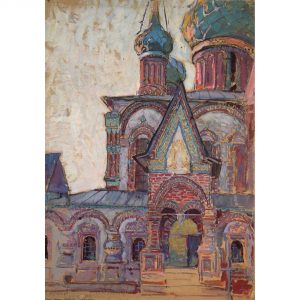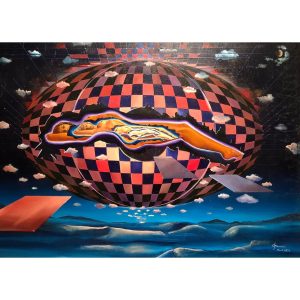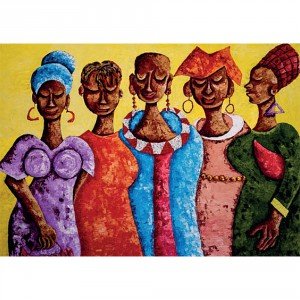These words are already enough to explain why venture capitalism, high-tech flourishes in Israel. Jewish scientists have been known throughout the world since ancient times, the list of Nobel laureates tends to infinity, and per capita Israel has the largest number of museums and galleries in the world.
In addition, Israel is a center of mass immigration, about 45% of the population was born in other countries. New repatriates are actively striving to join society, to find their place, so they work hard and effectively, adding to society the same business and creative energy that Buffett spoke about. Thus, the country had a foundation for the formation of its culture.
Why “let’s start with history” and the sacramental question, starting from the turn of the 19th-20th centuries, became the subject of reflection in art criticism: does Jewish art exist at all?
Of course, today there is no uniform answer to it, just as there is no simple answer at all to the question about any national entities.
What is considered national in art is always in fact heterogeneous, and here the problem of definition is exacerbated by the fact that Jews in the Diaspora, as a rule, used the material and artistic culture of the peoples among whom they lived.
The names of Marc Chagall or Chaim Soutine are on everyone’s lips, but many of the artists who participated in this process (for example, Max Weber in America or El Lissitzky in Russia) later became classics of European modernism, and not everyone always knows what they got initial impulse in the context of the “Jewish renaissance”.

El Lissitzky
«Proun 1D»
1919, Basel Kunstmuseum

Marc Chagall
«Mosaic panel»
1962, Chagall Hall in the Knesset
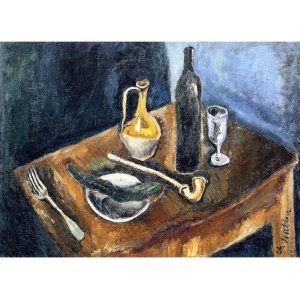
Chaim Soutine
«Still life with a pipe»
1916
Probably, the most correct thing would be to find out why then we ask the question about Jewish art at all?
Undoubtedly, this is a typical question of the 19th-20th centuries, connected with the process of building national cultures taking place at that time – with the cult of the artistic and the idea of its leading role in culture inherent in this era. Once this question was formulated, the answer to it was not only books and articles, but also practical actions taken by groups of artists in different countries in order to make Jewish art in the full sense of the word a reality.
The reason for the unexpected rise of Jewish artistic creativity and, in general, the particular acuteness of the question of Jewish art in the 19th and 20th centuries was the doubt that was often expressed at that time about the very theoretical possibility of its existence. One of the reasons for this doubt was the so-called second commandment, which forbids plastic images, due to which it was believed that the Jews were not interested in art and did not develop any national artistic tradition. The second reason, not related to artistic creation, was anti-Semitic prejudice, according to which Jews know how to “cash in”, but are incapable of productive work. In this sense, the Jews were denied the ability to be not only artists, but also, say, farmers. And while these views cannot be overlooked as xenophobic, philosophers and writers such as Feuerbach, Marx, and Wagner elevated them to a whole theory, on which, in turn, anti-Semitism was already willingly relying.
Jewish artists and writers of the 19th-20th centuries, in their reflections on the attitude of Jews to artistic creativity, relied on the ideological heritage of another famous philosopher, Kant and the Zionist theorist Martin Buber, who suggested that emancipation opened up new opportunities for the development of Jewish art and that Jewish artists it remains only to gain geographical ground in the land of Israel, so that artistic flourishing will come among them. Based on his ideas, the Bezalel Art Academy was created in Jerusalem, named after the master and architect Bezalel, the son of Uri, the son of Hur, who oversaw the construction of the Tabernacle. We will return to the Jerusalem idealist dreamers who were the pioneers of Israeli art later ….
During the same period in the Russian Empire, the Jewish intelligentsia and young artists devoted themselves to the study and collection of Jewish artistic heritage: tombstones, architecture and paintings of synagogues, illuminated manuscripts, scrolls, ritual objects that testified to a rich artistic culture.
El Lissitzky, Issachar Ber Rybak, Boris Aronson, Solomon Yudovin saw in the Jewish primitive a wealth of symbolism and plastic moves that could help make their art both national and modern. They participated in ethnographic expeditions (the famous Jewish ethnographic expedition of Semyon An-sky in 1912-1913), sketched objects of folk art, wrote aesthetic reflections on the topic of what the nature of Jewish folk art is and what it should become in the future.
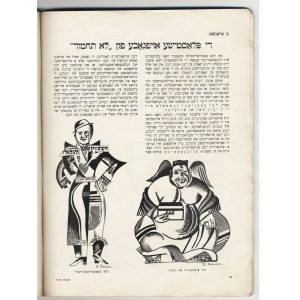
Boris Aronson
«Сostume sketches at Maurice Schwartz’s Yiddish Art Theater»
1927, YIVO Institute for Jewish Research

Issachar Ber Rybak
«Market»
1917

Solomon Yudovin
«Illustrations for Lion Feuchtwanger's novel Jew Suess»
1937
The achievements of the Jewish avant-garde found their practical application immediately after the revolution of 1917, when Jewish cultural figures saw an opportunity to create art, literature, theater, and the press almost from scratch for their people, finally freed from the restrictions of the Pale of Settlement and political oppression. The unification of political and cultural forces that supported modern democratic culture and art in Yiddish was called the Kultur-Liga and had branches in the cities of Russia, but throughout Europe, America and Latin America, the dispersion of the Jewish people created a transcontinental breadth of this
phenomenon. Of the well-known artists in Russia, members of the Kultur-League were El Lissitzky, Marc Chagall, Nathan Altman, David Shterenberg, Alexander Tyshler, Robert Falk, Solomon Nikritin and others.
They organized exhibitions, illustrated books in Yiddish, and perhaps their greatest achievement was work for the Jewish Theater in Petrograd and Moscow.
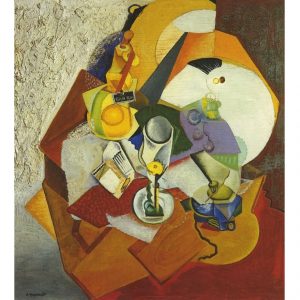
David Shterenberg
«Still life with a lamp»
1920
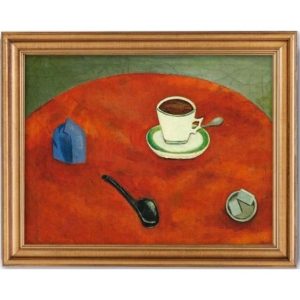
David Shterenberg
«Red table»
1920-е
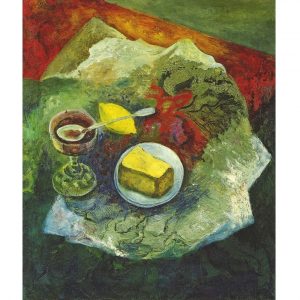
David Shterenberg
«Still life with lemon»
1930
Jewish groups, each with its own concept, arose at this time throughout Europe, artists gathered, argued on this topic, founded magazines and exhibitions dedicated to Jewish art.
In France, in Paris, the number of Jewish artists is especially large – they were attracted not only by the cultural aspect, but also by the civil liberties to which they received access. Henri Caro-Delvay, Abel Pan, Edouard Moise, Lucien Levy-Durmer, Alphonse Levy, Edouard Brandon. Camille Pizarro, along with Renoir and Monet, is one of the largest representatives of impressionism; Jeanne Bergson, the philosopher’s daughter, became a student and follower of Bourdelle; Meyer de Haan, a Dutch Jew, and Mogens Ballin, a Danish Jew, who joined Gauguin during his Pont-Aven period, around 1890.They became the first Jewish artists to achieve success through their work in France. Many of these 19th century artists continued their activities throughout the first half of the 20th century or part of it.
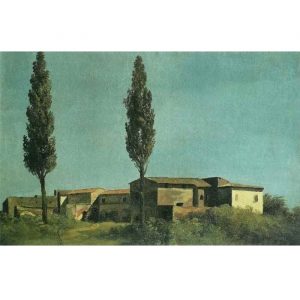
Camille Pizarro
«Villa Farnese two poplars»
18th century, Pierre-Henri de Valenciennes, Musee du Louvre, Paris
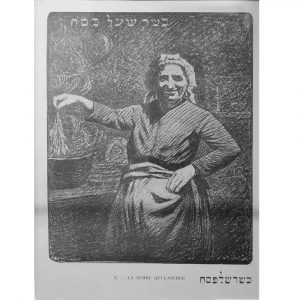
Alphonse Levy
«Kosher for Pesach»
1900-е

Camille Pizarro
«Square in Caracas»
1850-1852, Colección Patricia Phelps de Cisneros, Caracas and New York
At the beginning of the 20th century, the mass arrival of Jewish artists in France and their contribution to French culture occurred as if in separate waves that formed interpenetrating strata.
However, the group of Jewish artists was easily recognizable and rather homogeneous – in the vast majority with the exception of the great Modigliani and Jewish artists of Tunisian origin who worked in the style of Orientalism – Maurice Bismuth and Moses Levy, Marc Chagall, Borvin Frenkel, Mikhail Kikoin, Chaim Soutine, Leon Shulman Gaspard – at some time competed for the favor of a girl named Bella Rosenfeld, who later became Chagall’s wife. In early 1916, Leon left for the United States.
There he exhibits his military work at the National Academy of Design in New York. Renowned critic James Carrington even wrote a long article in the influential Scribner magazine.
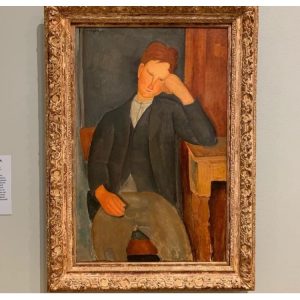
Amedeo Modigliani
«Young student»
1918
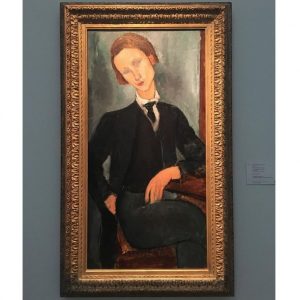
Amedeo Modigliani
«Portrait of Pierre Eduard Baranovsky»
1918
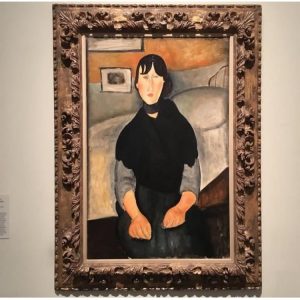
Amedeo Modigliani
«Young Woman of the people»
LAMCA (Los Angeles County Museum of Art), USA
Isaac Dobrinsky, Pinkhus Kremen – these artists were from Central and Eastern Europe, they were united by a common Yiddish language culture.
Very quickly – in less than ten years – the Hive became one of the most active centers of creativity. Jewish artists were the absolute majority in the Hive. Gradually, the artists took over the nearby streets. With very few exceptions, the artists who settled in Montmartre are Yakov Balgley, Osip Lipchitz and others.
After moving to Paris, not all young Jewish artists broke with Judaism. The proof that their connection with religion did not disappear is the creation in 1937 in Paris of the Association of Jewish Artists, initiated by Weissberg and Aronzon, and of which Frenkel later became president. This Association had at least 200 members.
Despite the inevitable personal jealousy and rivalry, Jewish artists closely communicated with each other and showed solidarity – they were brought together by a common struggle for recognition of their art, which was defended by both the gallery owner Zborovsky and the publisher Kivelevich.
As for Kivelevich, he came up with the idea, completely new at that time, to publish monographs by small-format artists at very reasonable prices in his Triangle Publishing House. The wide distribution of these publications undoubtedly contributed to the fame of artists, among whom were many Jews – some were famous as Kars, Pasen or the sculptor Ingelbaum, others are much less famous.

Max Weber
«Fourth dimension interior»
1913, National Gallery of Art, Washington
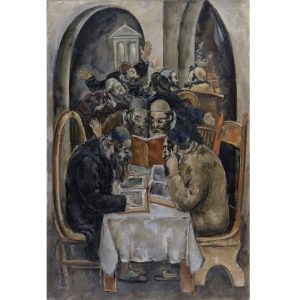
Max Weber
«The Talmudists»
1934, The Jewish Museum NY
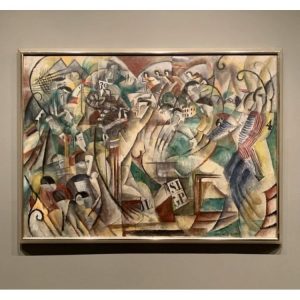
Max Weber
«Athletic Contest»
The Met (The Metropolitan Museum of Art)
And we return to the relationship of the publisher and artists with Judaism, learning that in parallel with the French edition of these publications, a Yiddish edition was also issued, which implies that at that time in Paris there was a clientele for such publications.
Another proof of the strong connection of these artists with religion is that in an era when travel required much more time, effort and greater finances, many of them traveled to the land of their ancestors, to Eretz Israel, long before the creation of Israel: Feder traveled there in 1925 and returned with his illustrations for two books on Jerusalem and a significant series of drawings, watercolors and gouaches; between 1921 and 1924 Ancher studied at the Bezalel school and worked on the kibbutz; Balgley visited Jerusalem about the same time, and brought back wonderful portraits of young women from there; Chagall rode for the first time in 1931; in 1926. Pasen decided to settle there and drove as far as Cairo, but then returned to France; Jacques Shapiro, Georg Kars, Mandelbatzm, Jacques Lipchitz and Mane-Katz went there…
After 1919, in the favorable atmosphere of the end of the war, the influx of new immigrants was practically uninterrupted. Alfred Aberdam, Sigmund Menkes, Joachim Weingart and Leon Weissberg, Marcoussis, Mondzen, Mela Mutter, Shana Orloff, Marek Schwarz, Eugene Zach and others.
After 1919, with the end of the war approaching, the influx of new immigrants practically did not stop. Alfred Aberdam, Sigmund Menkes, Joachim Weingart and Leon Weissberg, Marcoussis, Mondzen, Mela Mutter, Shana Orloff, Marek Schwarz, Eugene Zach and others.
The immigration movement intensified after 1933. Jewish artists, who until then hesitated between Berlin and Paris, no longer had a choice. The hegemony of Nazism was not only closed to foreign immigrant tourists from Germany, but also forced those who settled there to leave the country. Many of them found shelter in France, not suspecting that this temporary one would be sheltered.
In the Prussian, Austro-Hungarian Kingdom and the German Empire (Germany, Austria, Hungary, Poland, Czech Republic, Slovakia, Slovenia, Romania, Croatia, Bosnia and Herzegovina, Serbia, part of Ukraine) there lived a large number of Ashkenazi Jews, among them there were many creative.

Paris School Jewish artists
«Jewish Museum»
Paris

Mordechai Ardon's stained glass
«Isaiah's Vision of Eternal Peace»
Jewish National and University Library. Jerusalem. Israe
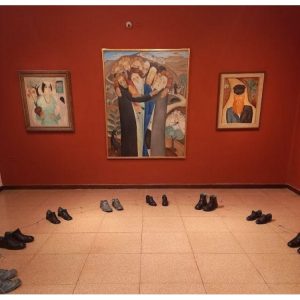
Ruben Museum
«House Museum Reuven Ruben»
Tel Aviv, Israel
During the 19th century, Jewish artists and intellectuals illustrated in various fields. Their contribution is so great that in 1912 the young journalist Moritz Goldstein wrote in an article: “We manage the country’s intellectual wealth.”
Maurits Gottliebe – during his lifetime he was called the Jewish Rembrandt.
In 1876, in Munich, one of his outstanding works came out from under the brush – Shylock and Jessica – an illustration for Shakespeare’s drama The Merchant of Venice. With this picture, Love entered the life of Maurice. The artist wrote Jessica from Laura Rosenfeld, the daughter of a prosperous Viennese banker.
In 1878, in Munich, he painted his “main” picture – “Synagogue on Yom Kippur, which is now in the Tel Aviv Museum of Art, dear and somehow intimately personal to any Jewish heart, our national masterpiece. This canvas is both a kind of summing up, and a premonition of imminent death, and a tribute to love, and loved ones like it. Of the twenty figures in the painting, fifteen are personally familiar to the artist. In addition to Maurizia, the artists are four of his younger musicians – Philip, Marchin, Marcel and Leopold.
Moritz-Daniel Oppenheim – was the first German Jew to receive a classical art education, a member of the Nazarene movement.
Ferdinand Heilbut – whose talent is characterized by nobility, liveliness of color and emphasis in expression, he received a second medal at the Paris Salon in 1857, 1858 and 1861.
Ephraim Moshe Lilien, Yaakov Adami, Nathaniel Zichel, Valery Jacobi, Salomon Hirschfelder, Max Lieberman, Kaufmann Isidor, Ilex Beller – the father of the famous actor and TV presenter Georges Beller.
Sophie Blum-Lazarus is an artist inspired by the French Impressionist movement who studied painting in Frankfurt before specializing in tapestries.
Portrait painters Leo Lehmann and his sons Heinrich and Rudolf in Hamburg, Levi-Elkan in Düsseldorf enjoyed success, Samuel Hirshenberg – Professor of Bezalel. The departure was for the artist the final solution to the problem of “eternal wandering”. From that moment on, his work changed: he began to paint sunny, post-impressionist landscapes of Jerusalem and its outskirts (reminiscent of the Italian landscapes of 1901), as well as characteristic types of Jews and Arabs. A certain dramatic tonality is characteristic only of his oil sketches of the Jews at the Wailing Wall.
Herman Struck – was widely known as a portrait graphic artist. Among his works in this genre are portraits of Herzl, Freud, Einstein, the artists Josef Israels and Leonid Pasternak, Heine, Stefan Zweig, Henrik Ibsen, Friedrich Nietzsche and Oscar Wilde. Einstein liked his portrait so much that he printed several copies and sent them to his friends as a keepsake. On the back of these portraits, he did not forget to indicate – “Artist Herman Struck.” At the end of the war, he was a member of a group of German specialists who participated in the Paris Peace Conference.
In 1922 he moved to Haifa, participated in cultural activities, was one of the initiators of the creation of the city art museum in Tel Aviv (opened in 1931), and was widely involved in charity work.
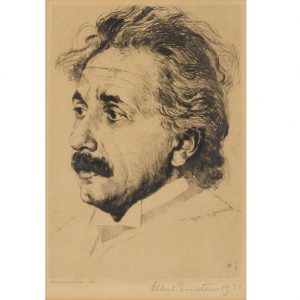
Herman Struck
«Albert Einstein»
1931

Herman Struck
«Hermann Struck books illustrated by Hermann Struck and portraits of prominent personalities, Jews from all over the world (20th century)»
Hermann Struck Museum, Haifa, Israel
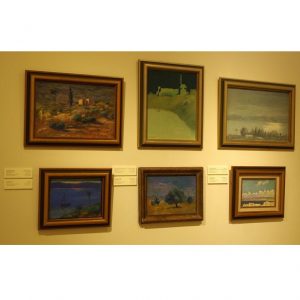
Herman Struck
«Hermann Struck landscapes of Eretz-Israel in the first half of the last century, views of the Kinneret, Haifa, Jerusalem»
Hermann Struck Museum, Haifa, Israel
Reuven Rubin, Shraga Weil – he is known for decorating the entrance doors to the Knesset and the residence of the President of Israel, ceramics on the facade of the Great Synagogue in Tel Aviv and the monumental decoration of the Kennedy Center in Washington.
Mordechai Ardon – in 1954 he received the UNESCO Prize at the Venice Biennale, in 1964 – the Israel Prize, his exhibitions were held in Israel, London, New York, Amsterdam. One of the artist’s latest works is the stained-glass windows of the library of the Hebrew University in Jerusalem. Yaakov Steingardt, Anna Tycho, Leopold Krakauer.

Reuven Rubin
«Harvest of olives»
1967

Reuven Rubin
«Jew with a red beard»
1924
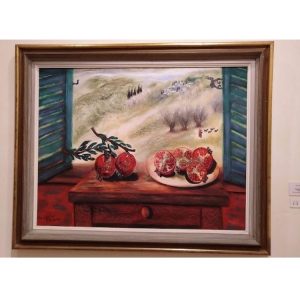
Reuven Rubin
«Grenades on the window»
1967
Felix Nussbaum – died in the infamous Auschwitz in August 1944.
Among the Jewish artists who died in German concentration camps, Nussbaum is by far the most famous and recognized in Germany.
Of course, the interest in Nussbaum’s work is due not only to the tragedy of his fate, but, first of all, to the high artistic merits of his works, filled with deep content, with their symbolism and peculiar colors.
With such completeness and persuasiveness, he captured in his work the entire depth of the atmosphere of fear, despair and hopelessness in which the Jewish population of the 3rd Reich and the European states occupied by the Nazis found themselves. In essence, his works have become an artistic reflection of the Holocaust, its original accusatory documents.
This whole culture ceased to exist in Europe and Russia, with the rise of Hitler to power in 1933 and after the Holocaust and the surge of anti-Semitism that preceded and followed it.
To summarize, the contribution of Jewish artists to art is undeniable – this proves both the number of such artists and the quality of their work.
Most of these artists continue to be sold in galleries and auctions today.
Gala Matveeva-Finkilstein
Art historian, art advisor
Partner ART MOST
Studied:
A.N. Kosygina art critic
1st degree (bachelor)
HSE Media Communications
TAU (Tel Aviv University) art critic and art business 2-degree (master's degree)
Sotheby's Institute of Art MBA art business
Catalogue:
-
André Derain
Big Ben. Lithographic Poster, 1964
73 x 53 cm
1,100 € -
Konovalov Yuriy
Norway
44 x 52 cm
900 € -
Kakovkina Galina
Alexander park
60 x 70 cm
1,500 € -
Vetrogonsky Andrey
Still life with trout
40 x 50 cm
2,400 € -
Mantrov Dmitriy
Forest – 2
80 x 95 cm
1,100 € -
Lezhnikov Yuriy
Cathedral
70 x 50 cm
950 € -
Fossine
MOTHER EARTH
73 x 100 cm
2,900 € -
Ogembo Mary
Wamama wa Chama (Women Group)
120 x 160 cm
7,615 €
